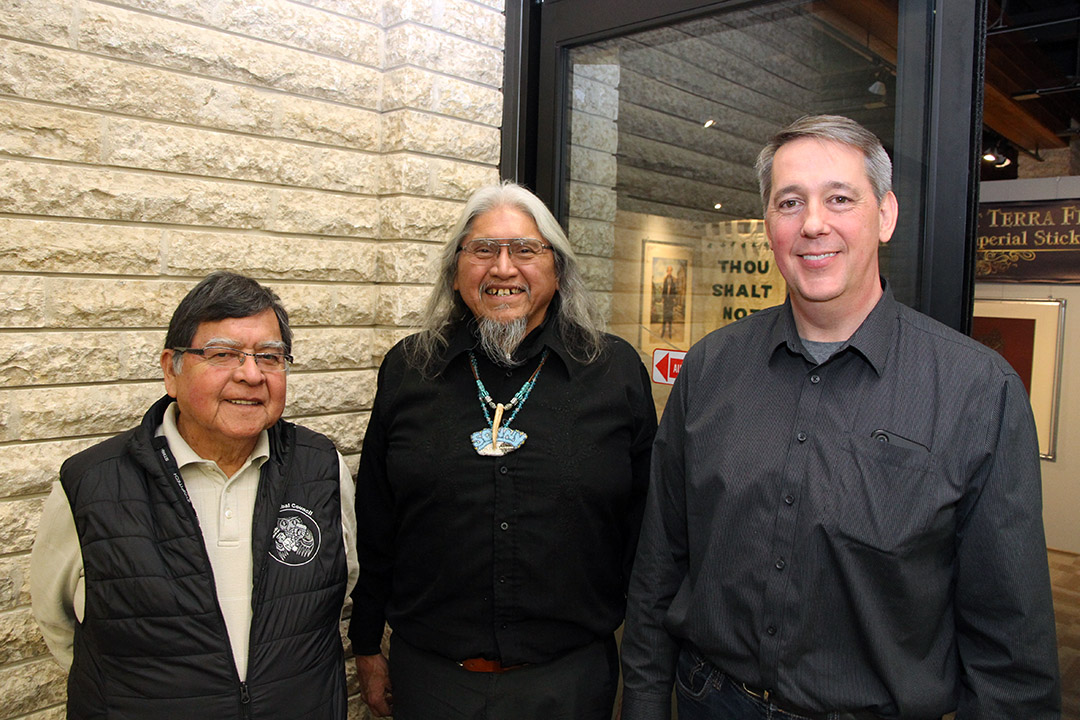
USask historian tracing lost Stó:lō stories
Through community engaged scholarship and collaboration, a University of Saskatchewan (USask) historian aims to shed light on a dark chapter of Canadian history when a number of Stó:lō First Nation families were tragically torn apart.
By Chris MorinWhile working as historian for the Stó:lō Nation in the 1990s, Dr. Keith Carlson (PhD), now a professor of history and Research Chair in Aboriginal and Community-Engaged History at USask, was tasked to research how the 1858 gold rush impacted the Stó:lō communities, including looking at the value of gold that was taken, and the environmental damage to creeks and river systems. What he stumbled across in the archival record was far more disturbing—evidence of an eight-year-old boy having been taken by a California miner.
Earlier historians had overlooked the story, and in the wake of residentials and other tragedies, the story had also slipped from the memories of many in the Stó:lō community.
Digging deeper, Carlson discovered evidence suggesting that a large number of Stó:lō children had been abducted from the area by miners from the United States. And while no one knows exactly how many children were taken away during the gold rush, one contemporary observer recorded that “a great many” young Stó:lō boys were taken to California where they were used as a source of free labour.
“We were able to find the burial site of one of them in Sacramento,” said Carlson. “And we know that 30 years later, two other young boys who were taken when they were six years old, found their way back to the Fraser Valley to the Stó:lō community. It’s almost unbelievable, but somehow they made that journey.”
Working alongside members of the Stó:lō community on Lost Stories, a Canada 150 project that aims to shed new light on forgotten stories, Carlson has nurtured relationships with a number of community leaders, academics, and artists to uncover truths about the gold rush.
Stó:lō cultural leader Dr. Naxaxalhts’i, Albert “Sonny” McHalsie, was recently on campus for a panel discussion at the Diefenbaker Canada Centre, and highlighted the value of university-community collaboration and the need for more people to dig deeper into historical injustices against Indigenous communities.
“We still have a protocol where if someone from our community passes away, we bring them back home,” said McHalsie. “There’s an expression in our language that says that. My niece passed away in Mexico and we had to bring her back to be buried back home. It’s a strong belief, and at some point, I believe the community will look into bringing these lost boys back to be home.”
Carlson, internationally recognized for collaborative research with Indigenous communities, recently launched the unique-in-Canada database developed at USask with student researchers that aims to ensure Gladue rights of Indigenous people are fully accounted for during sentencing. In 2017 he was appointed to the College of New Scholars, Artists and Scientists of the Royal Society of Canada. He also leads the one-of-a-kind Stó:lō Ethnohistory Field School, which brings graduate students into Stó:lō communities in B.C.’s Fraser Valley region to work on priority community projects.
Carlson said the research done in the Fraser Valley is community-engaged scholarship, and hopes these partnerships will help inspire the telling of similar stories of Canada’s history from other regions. One current project funded by the Social Sciences and Humanities Research Council looks at how Stó:lō people are envisioning future reconciliation.
“We have students working both here on campus and in the communities and doing interviews with youth, artists, hunters and fishers there and asking what they envision reconciliation should look like, so that people can start to imagine how to bring that about,” said Carlson. “From that research, we are taking those voices to the leaders and chiefs so that they have concrete information to help them design and implement the action plan of getting there.”
“This work requires a lot of conversations, and you have to ask what the community priorities are,” he continued. “As a university researcher I have certain skills, and I try to bring these into partnership with community knowledge keepers to find projects where we can collaborate and find answers to questions that we couldn’t otherwise do on our own. We find that middle ground where we can create capacity. That’s what I find exciting.”

